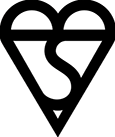While standard trade marks allow the consumer to identify the commercial origin of a product, certification marks indicate to the consumer that the product or service meets a particular set of standards set by the trade mark owner. The form of certification could be that the material, manufacturing process or the quality of the product meets certain standards.
Well-known certification marks include the British
Standards Kitemark  which informs the consumer that
the products meet standards as determined by British Standards
(usually relating to safety and quality management). The
Woolmark
which informs the consumer that
the products meet standards as determined by British Standards
(usually relating to safety and quality management). The
Woolmark  is a highly recognised
certification mark which demonstrates that the material and other
goods have been quality tested by The Woolmark Company.
is a highly recognised
certification mark which demonstrates that the material and other
goods have been quality tested by The Woolmark Company.
Such marks possess an air of prestige and integrity; with increasing responsibility bestowed on the shoulders of the certifiers to gain the respect of consumers, it is of paramount importance that certification providers grasp the legal framework behind such a valuable species of mark.
In the UK, US, India, China, and Australia to name a few, certification marks have been part of national law and practice for some time. However, since October 2017 proprietors have been able to apply for a unitary EU certification right. This significantly expands the geographical scope of protection for the relevant certification providers and provides them with the tools to effectively manage such rights using one registration platform.
EU Requirements
Similarly to standard EU trade marks, certification marks are assessed against absolute grounds for refusal which state that certification marks must not be devoid of distinctive character, descriptive of the goods or services that they certify and must not be contrary to public policy or accepted principles of morality. When examining certification marks the EU Intellectual Property Office (EUIPO) will also consider whether the public is likely to be misled in respect of the character or the meaning of the mark given the regulations of use.
Once filed, the certification provider is required to submit 'Regulations of Use' of the certification mark. In the regulations of use, the certification provider is required to specify the characteristics of the goods or services that the mark is intended to certify, the conditions governing the use of the certification mark and the testing and supervision measures to be applied by the certification mark owner. It also includes a declaration that the certification provider will not manufacture goods or perform services that are identical to the ones they are certifying; failure to comply with this declaration will make the registration vulnerable to invalidation.
It is unclear whether the existence of a standard trade mark registration (at either a national or EU-wide level) in the name of the certification provider for identical goods and services for which the application for certification applies is enough to warrant a refusal. Generally, the EUIPO will assume the Applicant's good faith in this regard. However, if the EUIPO is informed that the certifying provider also runs a business on the relevant market during the course of the proceedings by means of evidence of use or by third party observations, the application may be rejected and/or a finding of invalidation could be successful. Of course, some certification providers choose to provide licenses to use the trade mark to providers of the goods or services who comply with the quality standards. Proof of such use by third party licensees would likely overcome any refusal or invalidation action.
Other considerations
Prior to the introduction of certification marks at EU-wide level, it was a widely-accepted practice for certification providers to apply for a standard EU trade mark registration covering services such as "quality assurance services" in class 42. Various issues arise with this practice. After a trade mark has been registered for 5 years, in order to withstand a challenge to validity, as specified by the Court of Justice of the EU, there must be genuine use of the mark. Genuine use is defined as where the mark acts as an indication of trade origin over the goods or services and where the proprietor has actively tried to create or maintain a market share for the goods or services. Therefore, there are concerns that certification providers with standard EU trade mark registrations covering "quality assurance services" may be vulnerable to invalidity based on non-use if they are operating a system of licences as opposed to using the mark to promote its own services.
It is recommended that long-serving certification providers should review their existing EU trade mark portfolio; consideration should be given to these standard marks dressed up as certification trade marks. Are they just sitting ducks, and would they be better served under the new regime? The price of secure protection would come at the loss of an earlier registration date but a worthy cost, nonetheless.
The content of this article is intended to provide a general guide to the subject matter. Specialist advice should be sought about your specific circumstances.

